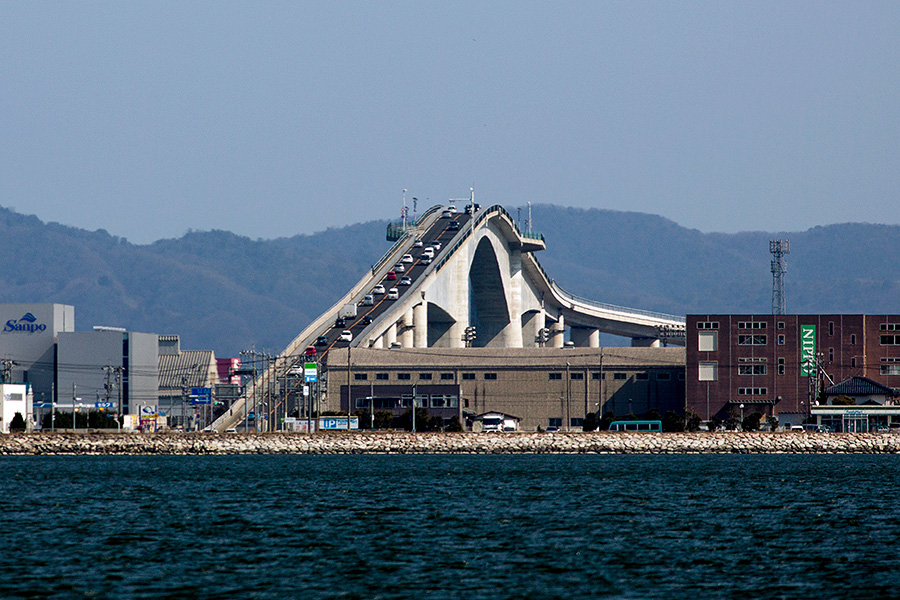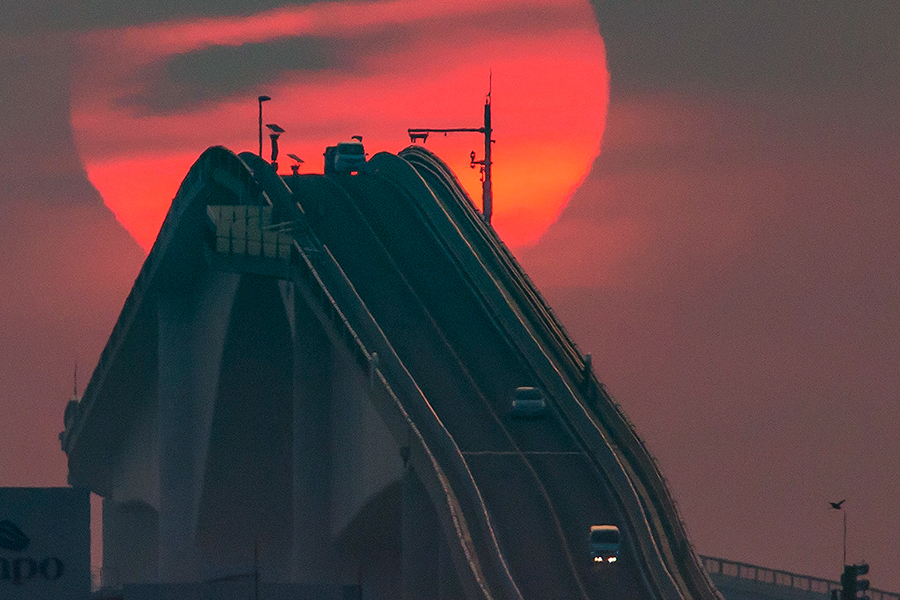Sightseeing Spots



Eshima Ohashi Bridge: Japan's Roller Coaster Road Over Lake Nakaumi
As a Japan's famous vertical bridge, the Eshima Ohashi Bridge connects Matsue City in Shimane Prefecture and Sakaiminato in Tottori Prefecture. It looks more like a roller coaster than a road. It is basically a highway to outer space, a shortcut to vomiting from nausea, making driving over this thing one seriously thrilling car ride. It's one of the most spectacular bridges in the world. Spanning approximately 1,446 meters in length and standing about 44 meters tall, the bridge allows passage for ships up to 5,000 tons beneath it. The slope on the Matsue City side is 6.1%, with an elevation increase of approximately 6 meters per 100 meters traveled. (Images of Eshima Ohashi Bridge are downloaded from https://sakai-port.com/pages/87/ and https://www.kankou-shimane.com/en/destinations/9301).

Shimane’s sightseeing symbol, Lake Shinji, is the seventh largest lake in Japan and has a circumference of 45km. The brackish water supports an abundance of acquatic life, including sea bass and shijini clams, which are among the seven delicacies of Lake Shinji. The little shijimi boats that dot the lake in the early morning paint a poetic picture, and the sun sinking behind the tiny island of Yomegashima is not to be missed. Sunsets are best enjoyed on from the grounds of the Shimane Art Museum.

Completed in 1611, Matsue Castle was built over a five year period by Yoshiharu Horio, founder of Matsue City. The central tower is the only such remaining in the Sanin Region and from its top floor visitors are treated to a panoramic view. Beautiful camellia and cherry blossoms fill the castle grounds during spring and is a recognized symbol of our historic city.

A small boat takes passengers around Matsue Castle and through the city’s canals. Along the way, passengers will pass under 16 bridges some low enough so that the boat’s awning must be lowered to pass – a fun experience for all. Kotatsu heaters are placed in the boat during winter and passengers can literally experience the ‘warmth’of Japanese tradition.

This museum features approximately 1,300 masterpieces from modern Japanese painting circles, including the works of Yokoyama Taikan. The 52,000 square yards of Japanese-style gardens, which have been awarded as the best gardens in Japan for 16 successive years by "The Journal Of Japanese Gardening (USA)", are also a pleasure to see. Significant works of two great masters of modern ceramic art are also displayed in the Ceramics Hall.

It is a national treasure. This building is the tallest and one of the oldest shrines in Japan; it was built in 1744 and is 24 metres (78 feet) tall. It was supposedly over 48 metres (157 feet) tall, 1000 years ago. It is dedicated to Ōkuninushi-no-Mikoto, the god of relationships, so people come here to pray for a good relationship. In the tenth month of the lunar calendar (usually in November), Shinto gods from all over Japan gather here.

Starting with its discovery in 1526, the Iwami Silver Mine was one of the world’s most prominent silver mines for 400 years. During the Age of Exploration it was known only as 'The Silver Mine' to Europeans and at its peak was responsible for one-third of the world’s silver production. It became a UNESCO World Heritage Site in 2007, the first such mine to be registered in Asia.
